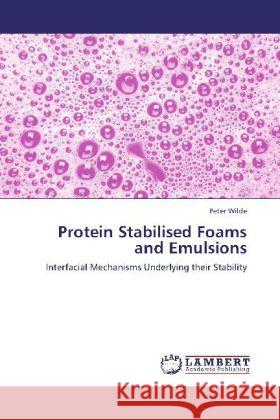Protein Stabilised Foams and Emulsions » książka
Protein Stabilised Foams and Emulsions
ISBN-13: 9783848416202 / Angielski / Miękka / 64 str.
A critical analysis of research papers by the author on the interfacial mechanisms controlling the stability of protein stabilised foams and emulsions. Proteins can stabilise foams and emulsions, by forming a visco-elastic adsorbed layer on the surface of the bubbles and droplets. The influence of protein molecular structure and the competitive adsorption of surfactants on the interfacial properties and the subsequent effects on foam and emulsion stability are presented. Approaches to increase the resistance to competitive adsorption through using hydrophobic proteins and highly elastic interfaces are described. The displacement of proteins from interfaces by surfactants was found to be a physical displacement process which heavily depended on the visco-elasticity of the protein adsorbed layer. Finally, approaches to protect foams against competitive destabilisation using lipid binding proteins, and non-covalent crosslinking proteins at the interface are shown. This caused in increase in surface elasticity, and hence improved foam stability.











